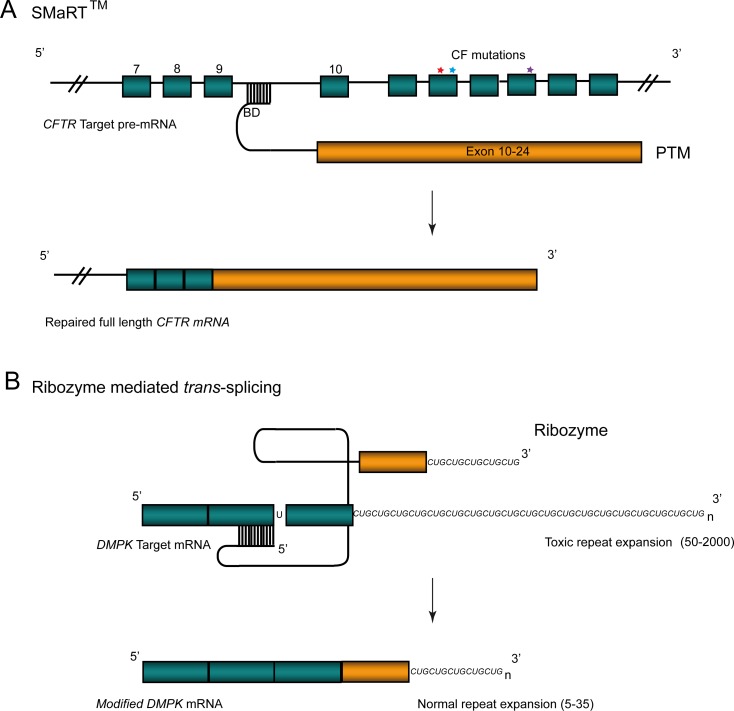Figure 2. RNA Trans-Splicing.
(A) Correction of CF mutations in the CFTR gene using SMaRT. A PTM containing a binding domain (BD), splicing domain (black line), and a coding domain (orange) incorporating exons 10–24 of wild-type CFTR mRNA, binds to intron 9 of CFTR pre-mRNA (green) containing disease-causing mutations (stars). SMaRT removes the mutant pre-mRNA such that reprogrammed transcript containing wild-type mRNA allows synthesis of a functional protein.
(B) Ribozyme-mediated trans-splicing for application to trinucleotide repeat expansions. Large (50–2,000) CUG repeat expansion in the 3′ untranslated region of the DMPK gene cause myotonic dystrophy. Ribozymes containing a reduced number of CUG repeats are targeted to the mutant DMPK transcript (green) via complementary binding mediated by a guide sequence (black bars). Binding of the ribozyme facilitates cleavage of the DMPK mRNA and trans-splicing of the coding region (orange) and smaller CTG repeat expansion to produce a non-toxic DMPK mRNA transcript.

